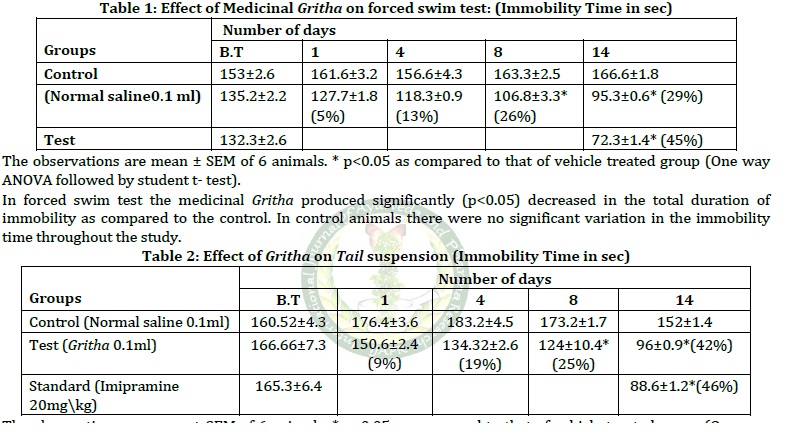Evaluation of Anti-Depressant Potential of Medicinal Ghrita
Abstract
This article aims to evaluate the possible antidepressant effect of the Ghrita prepared from the combination of these plants and to provide probable scientific explanations for using medicated Ghrita (ghee) in Ayurvedic system of medicine. Herbs for Ghrita like Marsilea quadrifolia, Lawsonia inermis, Mimosa pudica, Piper betle were collected freshly during the month of June. One part Kalka (herb bolus), 4 parts pure cow ghee, and 16 parts Dravadravya were used to make Ghrita (Swarasa). Anti-depressant potential of the Ghrita was evaluated by forced swimming, tail suspension, locomotor activity, rota-rod test (motor co-ordination), elevated plus maze (EPM) model, and hole board test were used to assess the Ghrita's anti-depressant potential. According to the Irwin schedule, Gritha medication reduces alertness but has no effect on other parameters, but imipramine treatment reduces responsiveness, alertness, grooming, and writing reflexes to some extent. Following 14 days of therapy with medicinal Ghrita, the immobility time in the forced swim test and the tail suspension test were reduced by 29% and 42%, respectively. In the rotarod test, it had no significant effect on muscle gripping ability when compared to control animals, whereas imipramine produced a significant result. It was observed that the medicinal Gritha significantly (p<0.05) decreases the locomotor activity in actophotometer test and head dips counts in hole board test as compared to control at the end of 14 days study in a 5 minute observation. Ghrita increased the number of entries in the elevated plus maze by 50% and the time spent in the open arm by 72%. The results of this investigation suggest the possible antidepressant potential of medicinal Ghrita.
Downloads

Copyright (c) 2022 International Journal of Ayurveda and Pharma Research

This work is licensed under a Creative Commons Attribution-NonCommercial-ShareAlike 4.0 International License.






